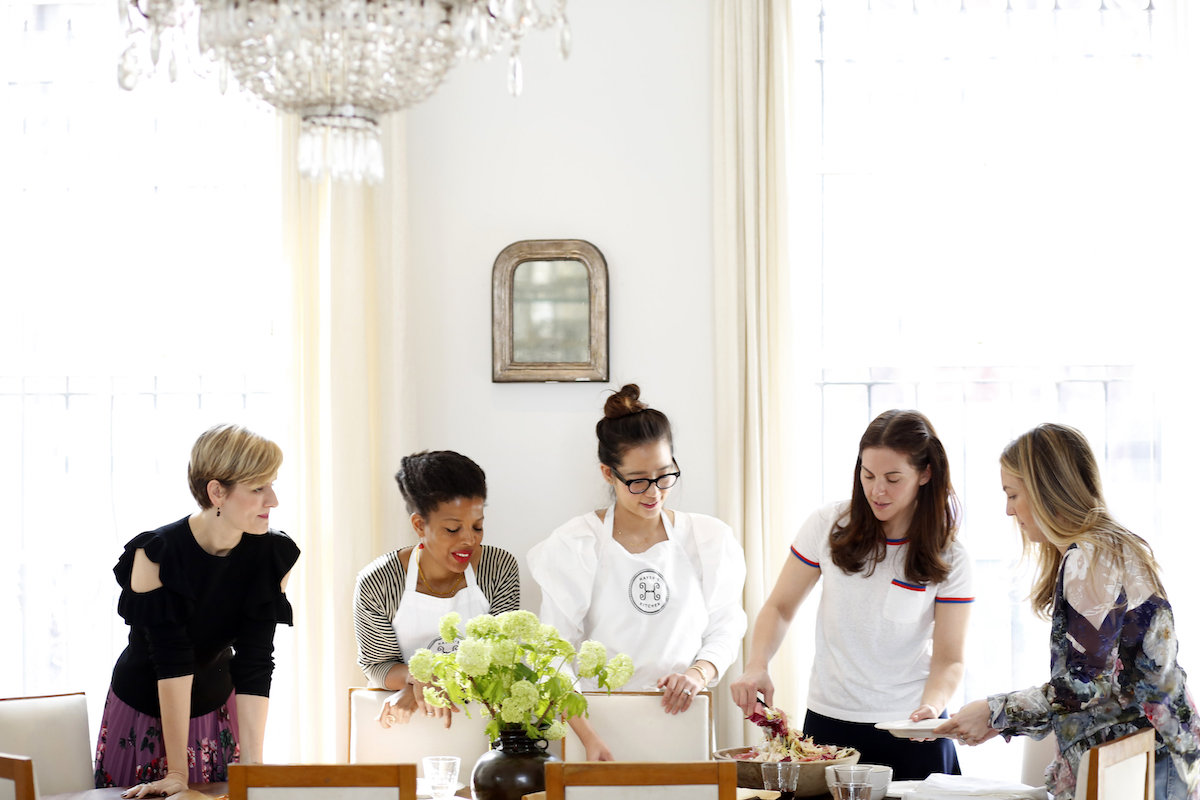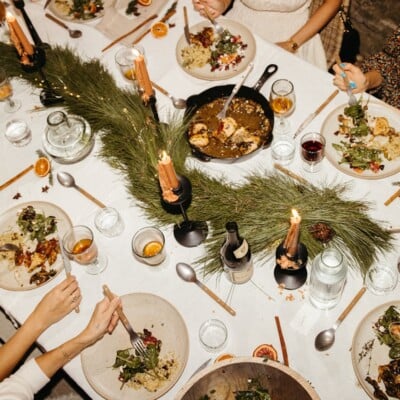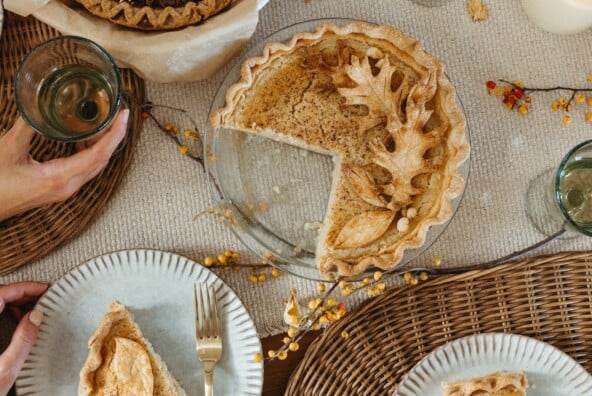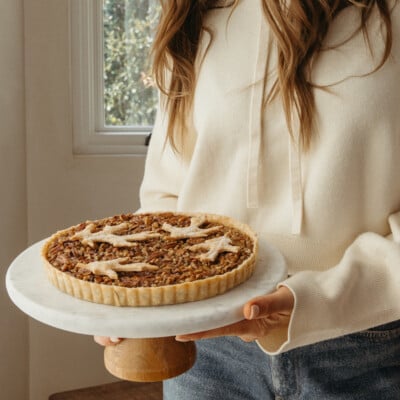There’s a shift happening in kitchens across the country.
Jars of tahini, bottles of harissa, and tins of miso paste have become staples on my grocery list, and (largely inspired by my social feeds) recipes like kimchi pancakes and jollof rice are in regular rotation. Sure, I already have a fairly packed pantry from my trips to the Indian store and deliveries from my mom who doesn’t think I can buy my own chaat masala. But this new roster of ingredients have shown up alongside an increased focus on the cuisines of various cultures that have taken over food media and the publishing world.
Food lovers are opening their palettes to new ingredients and incorporating them into everyday favorite recipes. In some ways, this is a good thing. If 13-year-old me, who was so concerned about her mom packing a fragrant sabzi for my lunch, had known that in the not-so-distant future, curry powder would be almost commonplace for the American home-cook, she might have eaten from the turmeric-stained tupperware with a little more gusto. But there’s caveats, too, and they’ve been called out on a new level this year as the idea of cultural appropriation has entered center stage along with calls for racial justice. In instances too many to count, recipe creators (in most cases, white food media) are using global ingredients in a way that erases the culture connected to them – and taking the credit for their cultural “mash ups”. And those of us that read and replicate those recipes at home are following suit, ignoring the origins of those ingredients and adding them to dishes without connecting them to the culture from which they come.
As someone whose cuisine is a part of this paradigm shift, I feel caught between a rock and a hard place. On one hand, I’m thrilled that masala and khichdi are being “normalized.” I’m excited that global ingredients are becoming more accessible in our grocery stores. But I’m frustrated, too. As I look back at the years of my life spent defending, or feeling embarrassed about, my quote “weird”, “smelly”, “exotic” foods, it feels a bit discordant to now see these same foods “trending” as white media capitalizes on them. To see a white food-media post about a khichidi cleanse, pandering it as part of a get-fit trend instead of understanding how as kids, our Indian parents would make khichidi for us when we were sick because it’s easy to digest when you have an upset stomach (not so we could lose weight) it feels a bit like my history with the recipe is erased. Why were Indian chefs not getting the same accolades for their khichdi?
The continued expansion of our collective palettes will continue, as it should. But knowing that, we must move forward responsibly.
Intellectual curiosity doesn’t stop when you enter the kitchen. The food of global cultures contains so much history, struggle, and perseverance. To skip over its origins and traditions is a disservice to that culture and to yourself.
As we continue moving towards a world in which a “global kitchen” becomes the norm, we’re called to consume consciously.

This article from The Atlantic said it best: “Modern food media prioritizes a certain kind of creator: American (read: white), with just enough quirk to be accessible to an imagined white Millennial audience.”
The quandary? Those at the forefront of food media are white, and the audience consuming their work and recipes are also, majority, white. So as we move into a world where more recipes are being created that lean on global ingredients in the kitchen, we have to wonder, have we handed over power to share those ingredients? For example, in media outlets, it’s common practice to change the actual names of a global recipe to make it seem more approachable. Calling a dish “a stew” even though it’s more akin to channa masala, or calling paratha, ‘balloon bread’, takes the identity away from these dishes and effectively whitewashes them.
To that end, when we choose to make recipes in our own kitchens from around the world, it’s important to ask ourselves who the creators are and why this person is sharing the recipe. Is this person simply inspired by a culture’s recipe and sharing their own version? Are they being respectful of that recipe’s origins through their nomenclature and techniques? What are they teaching me about this recipe, if anything? And if not, what work should I do to understand the origins or cultural relevance of this dish?
In some ways, it seems kind of silly to have to ask yourself questions like this when making a recipe. After all, cooking is supposed to be fun! But part of being an ally, even through food, means educating ourselves and understanding where the food we choose to eat and make comes from, and the people behind it. It means calling people into the conversation when they miscredit or get the heritage of a recipe wrong. It means supporting BIPOC creators sharing their stories and history through their recipes.

You see, there’s this idea that anything not readily available or easily recognizable is seen as ”different” or “other”. That I have to explain what a spice blend like chaat masala is when I use it in a recipe inherently labels a recipe as more complicated or different before anyone has even finished the article. And by making the food of a group of people seem “other”, we make those people seem “other” as well. There’s a layer of complexity to this. Personally, I’ve had people tell me they think Indian food is complicated to make at home, but are happy to call any stew a curry. My channa masala is “hard,” but “spiced chickpea curry” is not. Frequently, media outlets add the “easy” or “weeknight” moniker in front of an Indian dish to make it approachable even though for my family and the culture of those recipes, it’s just the normal food. Because of those edits, what assumptions am I making of a dish and its creator before I’ve even made the recipe?
As a writer and recipe developer who often introduces an unfamiliar recipe or ingredient to an audience, I feel a level of responsibility to share my personal experience with the recipe. And in some ways, I’m teaching myself. As someone who spent far too long trying to separate myself from my culture, I’m learning just as much as someone who may be reading one of the recipes I post. Like many other first gens, we grew up carrying some form of shame about our food being different, and we’re now playing catch up in fully embracing our heritage. In a way, I’m making up for lost time by reacquainting myself with my own culture and sharing my story. That’s my personal prerogative, but it’s not fair to put the responsibility of cultural education on someone who represents one face of a culture.

My work and my recipes are never going to encompass the entirety of the Indian experience. My chai recipe, for example, is so tied to who I am and represents my version of something that has been attributed to a whole country. But chai is such a familial and personal experience for South Asians that to say my chai is THE chai recipe, would be wrong. It’s my recipe, but not necessarily representative of the whole culture and the nuances that are found in every pocket of the country. I am certainly not nor do I ever want to be the token Indian American story, but will sometimes find people calling out recipes just because I do something different than another Indian recipe they’ve seen before, assuming that all Indian dishes of the same name should in fact, be the same. As we read a recipe to make in our kitchen, take the recipe as that person’s experience, not the entire collective of their community or culture’s experience. Use the recipes from around the world as a stepping stone to continue your education and learn the beauty in cultures from around the world to break assumptions and broaden your horizons.
And here’s the thing, it’s not just about how we consume recipes. It’s also about who’s creating them. Just because a recipe is considered Indian, like channa masala, does that mean someone not of Indian heritage can’t share their own recipe? If the point of a global kitchen is that it’s for anyone, regardless of their backgrounds, why should we limit who is allowed to share what? I would certainly never expect a BIPOC recipe creator to only share recipes from their culture.
There’s a quote I remember in this Eater article from cookbook author Priya Krishna, in which she says “‘I have been told so many times that my Indian food isn’t click-y, that it won’t get page views,” she says in an email, “and then I see white cooks and chefs making dishes that are rooted in Indian techniques and flavors, calling it something different, and getting a lot of attention.’” The fact of the matter is that, for many years, food media has long prioritized white recipe creators, effectively creating a specific, filtered lens through which these global recipes have been shared.
Personally, I think it’s fine for white creators to share global recipes and products, but with the caveat that they do so responsibly and with appropriate credit to the culture from which they are drawing from while following correct nomenclature. (ie. please don’t call everything you make from India a curry), and don’t monetize on a trend without understanding and educating yourself (appropriation alert!) It’s important as a creator to do the research and give recipes and ingredients their appropriate names and credits. Honor their history and the people behind them.

The point of food is to bring people together. But not just across the table. A global kitchen means bringing people together through the opportunity to learn about the world with food. It means opening the table to conversation about our traditions, what’s important to us, and where we come from. Food provides a chance for us all to do the work – with an end result that’s even more delicious when we understand the history behind it.
I share these words as I’m learning too, and want to open the table to these conversations. I’m learning to be a more conscious consumer of recipes as my global kitchen grows, while supporting my fellow BIPOC creators who deserve so much for the stories they are sharing through food. I haven’t always gotten it right either, but this desire to learn and grow is just a part of the journey.
So before you use that sprinkle of za’atar on your avocado toast or add curry powder to a stew, educate yourself. And then, celebrate the flavors of the world in your own global kitchen.





